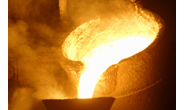International Steel Mills

Letter to the Editor: Come On CISA...Really?!?
Written by Peter Brebach
December 6, 2015
The following letter to the editor was received over the weekend from Peter Brebach, CEO of Iron Angels of Colorado, in response to an article written about the Chinese Iron and Steel Association (CISA) who recently complained about the Chinese mills being pointed at as being responsible for the steel industry woes in the rest of the world. Here is what Mr. Brebach had to say:
So, the Chinese Iron & Steel Association (CISA) is “astonished” at the accusation by several non-Chinese steel associations that China is the main culprit for the current worldwide overcapacity; really?!?
How can they argue with the obvious? China’s steel production exceeds their annual domestic steel usage by at least 300 million tons (and there is capacity for more), which in turn also constitutes 70% or better of all worldwide overcapacity. If such statements are not considered beneficial or responsible by CISA or not helpful in solving the global problem, then I wonder how Chinese overcapacity and their habit of dumping these mostly subsidized extra tons on the world market is beneficial or helpful to solving these problems.
![]() And to refer to the Chinese steel industry as the victim of anything is utterly preposterous. The victims of this situation are the steel producers in the various destination markets for such exports, along with the distributors in those countries, whose inventories get devalued overnight by the arrival of these Chinese shipments.
And to refer to the Chinese steel industry as the victim of anything is utterly preposterous. The victims of this situation are the steel producers in the various destination markets for such exports, along with the distributors in those countries, whose inventories get devalued overnight by the arrival of these Chinese shipments.
As to any measures CISA claims the Chinese steel industry has taken or will take to solve these problems by cutting obsolete capacity, that is nothing but a sad joke. We have been asked to listen to this broken record for many, many years, but nothing ever happens, so this is really getting old. Anybody only slightly familiar with the Chinese steel industry knows that many of the older and obsolete mills are located away from the large cities and industrial centers, and that their mostly private owners are in cahoots with the local party bosses, whose main concern is employment and whose priority is not the observance of orders coming from Beijing.The other part of the overcapacity problem is that new capacity was still being built long after it was obvious that there was no domestic demand to absorb it. And after having expanded their capacity to 140 or 150% of domestic demand, what exactly does CISA mean by “promoting the smooth development of the global steel industry?
Last, CISA seem to insinuate that their exports are responding to demand in overseas markets, by claiming their exports are the result of “market forces”. Yeah, if your product is 10, 20 or 30% cheaper than the next guy’s, some buyers who are not concerned too much about quality will buy it. As to its alleged popularity, I know of people who were unaware that the steel they bought contained boron, which makes the steel brittle and thus unsuitable for certain applications like pipe making. Boron also makes the steel an alloy in the eyes of the Chinese export authorities, resulting in a higher rebate for the shipper, and the eyes of US Customs, which used to enable the Chinese to circumvent US dumping duties for the carbon product – until of course the US mills put a stop to that.
I have spent most of my working life in steel trade and have dealt with many, many different countries. The serious problems I have experienced in dealing with Chinese suppliers outweigh those I had with all others combined. Most of my distributor customers now tell me they will not accept steel made in the PRC, often because their fabricator customers won’t touch it.
And to deviate just for a moment! The AISI is not entirely correct when blaming Chinese exports for the rather robust US import numbers, that are only coming down now. There are dumping duties on the books here for many if not most Chinese steel products, thus preventing those products to come here. However, Chinese exports to third countries will often replace imports from other exporting countries, who are then forced to look for alternative markets, including the U.S.
Peter Brebach
Peter Brebach
Read more from Peter BrebachLatest in International Steel Mills

Global steel mill output steady through May
Global raw steel production rose 2% from April to May, slightly above average production levels seen in recent months, according to data recently released by the World Steel Association (worldsteel).

Trump says US government to control 51% share in USS
President Trump says the US government will hold a 51% stake in U.S. Steel after the Nippon deal.

USS, Nippon Steel quiet as litigation deadline approaches
There has been little word from U.S. Steel, Nippon Steel, or the White House since President Trump endorsed the companies’ “partnership” on social media and celebrated it at the May 30 rally outside Pittsburgh.

Ternium’s Vedoya named AIST’s Steelmaker of the Year
Maximo Vedoya was awarded in recognition of Ternium’s expansion project in Pesquería, Mexico, and Ternium’s efforts to decarbonize steelmaking.

CRU: Baosteel hints at output cuts in China
Baosteel exec comments on market rumors of 50 million tons of output being cut this year, less than 0.5% of the 1 billion tons-plus China has produced annually in recent years.
